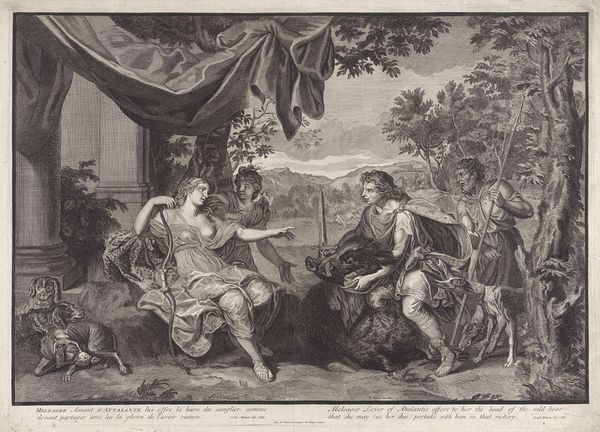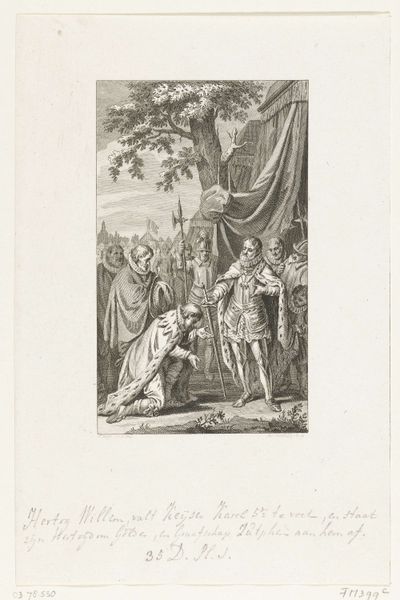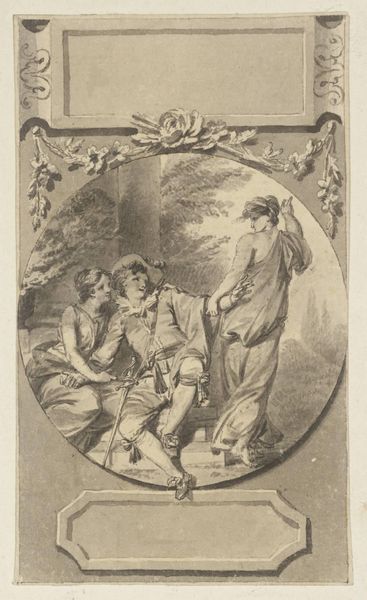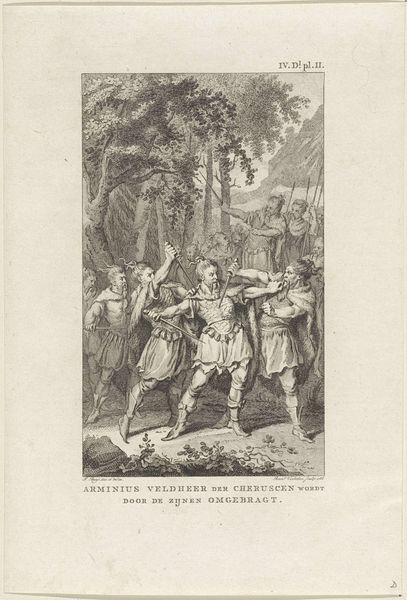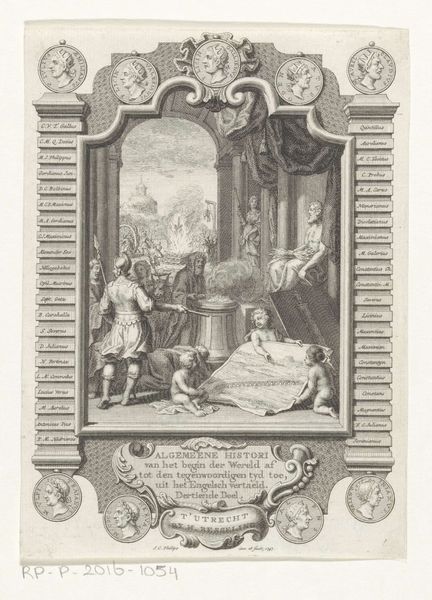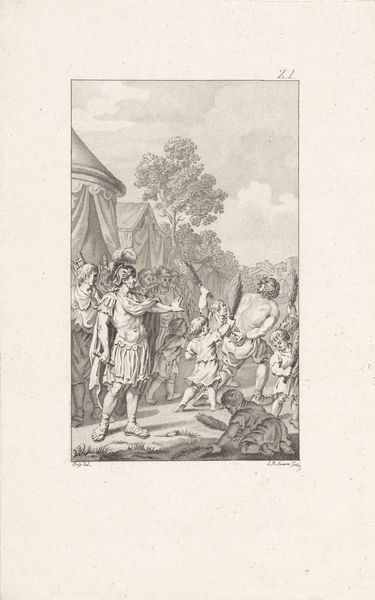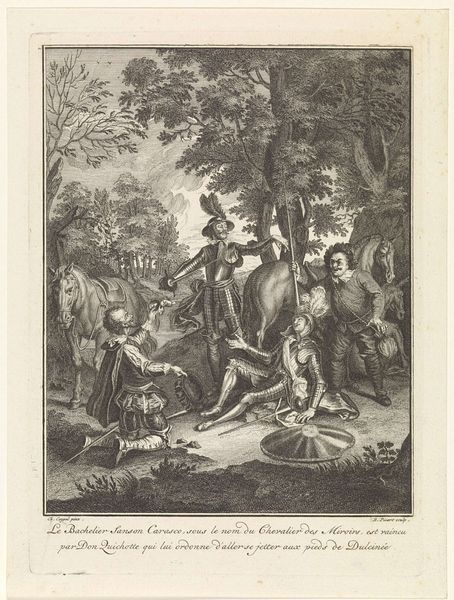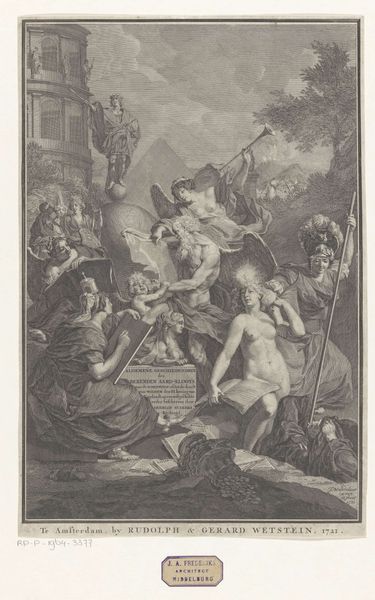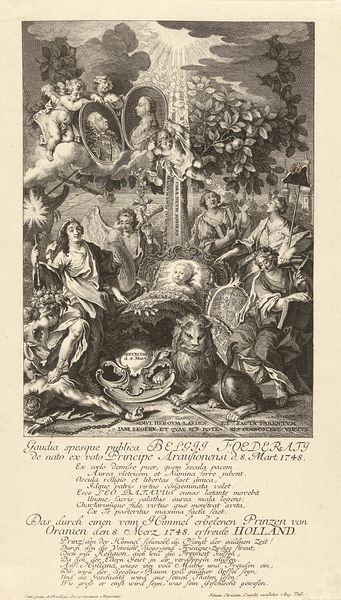
print, engraving
#
baroque
# print
#
landscape
#
figuration
#
line
#
history-painting
#
engraving
Dimensions: height 250 mm, width 175 mm, height 352 mm, width 253 mm
Copyright: Rijks Museum: Open Domain
Bernard Picart crafted this engraving, "Meleager en Atalanta," likely in the early 18th century, using metal plates and acid etching. Engraving is an indirect process; the image is incised into a plate, inked, and then transferred to paper under immense pressure. Look closely and you'll see the myriad of tiny, precise lines that build up tone and form. The character of this technique – detailed and exacting – lent itself perfectly to the classical subject matter, lending the scene an air of refinement. Consider the labor involved: Picart, a skilled artisan, would have spent hours meticulously cutting into the metal. The resulting prints, like this one, could then be circulated widely, bringing classical narratives to a broader audience. In that sense, printmaking served as a crucial engine in the wider distribution of ideas. It's a testament to the power of skilled handwork, made newly impactful through the mechanics of reproduction.
Comments
No comments
Be the first to comment and join the conversation on the ultimate creative platform.

